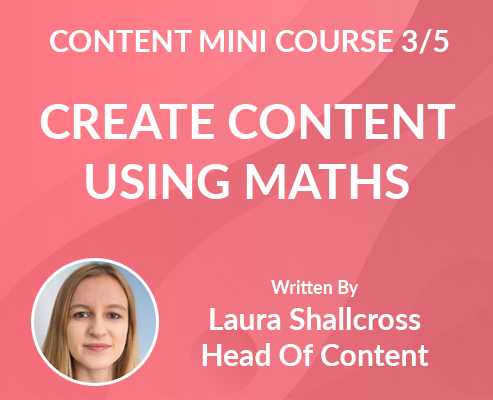Now you know the basic ranking factors for writing a blog post, it’s time to look a little more in-depth at how to create that perfect piece of written content.
Again, there’s nothing too complex about this at all. It simply takes some basic math to help you to understand those all-important essentials, like article length, keyword density, your number of headings, bold words, and so on.
Let’s start with a refresher on how the likes of Google actually rank their content.
First, the search engine will process your text based on the keywords that you’ve used. It then files the text into one of its pre-made algorithms, where it’ll get seen (hopefully) by your audience.
You could try and make your own algorithm, but what a waste of time! Instead, you can simply analyse which blog posts are performing best right now, and use these as inspiration for your own.
Here’s where the basic math comes in.
1. Analysing length
The first step is to check out the top-ranking blog posts for your topic of choice, then take an average from all the posts you look at. To check an article’s word count, you can paste the text into an online word counter, Google Docs, or Microsoft Word.
2. Counting keyword frequency
Your next step is where things get a bit more complicated. You need to work out the density of your target keywords by counting them up, then dividing the total number of keywords by the article length. Do this for each top-ranking article, then calculate the average. Try to find the keyword density for the top 5 to 10 keywords you plan to use in your own article.
3. Measure the use of headings, paragraphs, images and bold words
Run through your top posts-ranking again, but this time, look specifically at their design features. How many headings do they have? How about bold words? Paragraphs? Images? All of these can contribute to a favourable ranking on Google.
4. Find common phrases
You’ve already looked for keywords you plan to use in your article, but now you need to look at common phrases that your competitors are using themselves. Try to look for a trend across all of the top-ranking articles. If you find certain words that you didn’t plan to use, you know what to do.
By the way, some of these words might not be directly related to your subject. For instance “may”, “like” and “don’t” are common phrases in an article that can actually contribute to top-ranking success.
Yes, these tasks are time-consuming. That’s why we use Surfer SEO, which does every single one of them for us. That way, we can craft keyword-rich articles without unnecessarily taking the long route to get there.
In the next lesson, we’ll be discussing the difference between copywriting and SEO copywriting.





